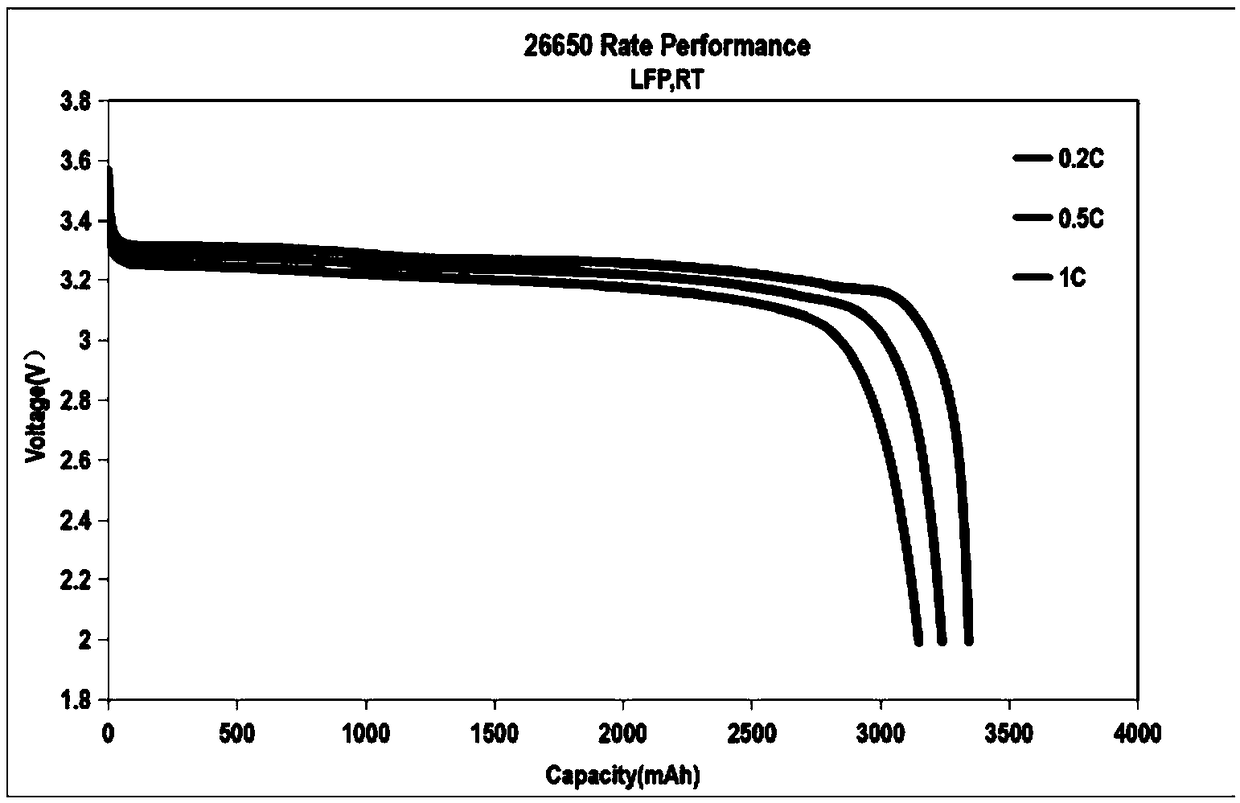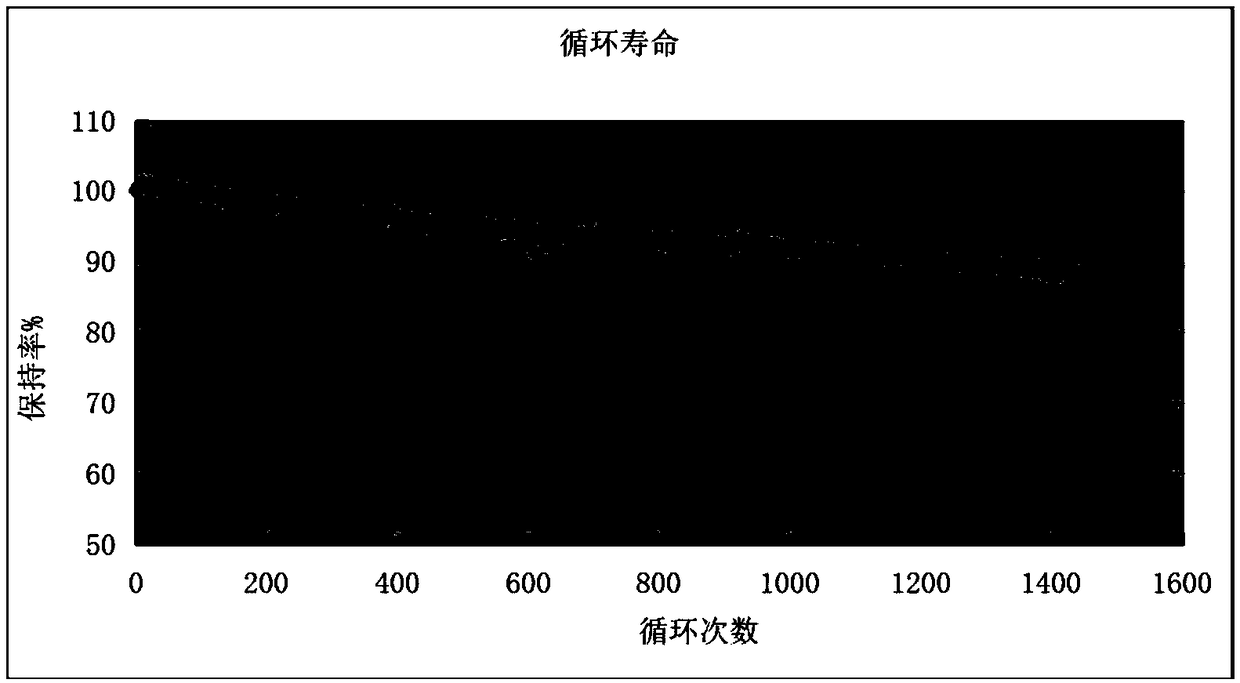A regeneration method of a positive electrode sheet of a waste lithium iron phosphate battery
A technology for lithium iron phosphate and waste batteries, which is applied in the field of regeneration of cathode sheets of lithium iron phosphate waste batteries, can solve the problems of low iron element value, time-consuming and laborious, low economic value of lithium carbonate, etc. low cost effect
- Summary
- Abstract
- Description
- Claims
- Application Information
AI Technical Summary
Problems solved by technology
Method used
Image
Examples
Embodiment 1
[0037] A method for regenerating a lithium iron phosphate waste battery positive plate, comprising the following steps:
[0038] (1) Weigh 100g of the positive electrode sheet of the waste lithium iron phosphate battery, first cut it into small pieces of 1-2cm, then crush it with a universal pulverizer, and pass through a 200-mesh sieve to obtain the coarse powder of the waste lithium iron phosphate battery;
[0039] (2) Slowly add 70g of lithium iron phosphate waste battery coarse powder to 500ml of sodium hydroxide solution with a mass fraction of 15%. The reaction process releases a large number of bubbles. The reaction time is 1 hour. After the reaction is completed, the solution is filtered and dried. Obtain aluminum-removing powder of lithium iron phosphate waste battery;
[0040] (3) Take 60g of lithium iron phosphate waste battery to remove aluminum powder, the iron content is 34.8%, the phosphorus content is 19.5%, and the lithium content is 4.35% through chemical con...
Embodiment 2
[0045] A method for regenerating a lithium iron phosphate waste battery positive plate, comprising the following steps:
[0046](1) Weigh 100g of the positive electrode sheet of the waste lithium iron phosphate battery, first cut it into small pieces of 1-2cm, then crush it with a universal pulverizer, and pass through a 200-mesh sieve to obtain the coarse powder of the waste lithium iron phosphate battery;
[0047] (2) Slowly add 70g of lithium iron phosphate waste battery coarse powder to 500ml of sodium hydroxide solution with a mass fraction of 3%. The reaction process releases a large number of bubbles. The reaction time is 3 hours. After the reaction is completed, the solution is filtered and dried. Obtain aluminum-removing powder of lithium iron phosphate waste battery;
[0048] (3) Take 60g of lithium iron phosphate waste battery to remove aluminum powder, the iron content is 34.8%, the phosphorus content is 19.5%, and the lithium content is 4.35% through chemical cont...
Embodiment 3
[0052] A method for regenerating a lithium iron phosphate waste battery positive plate, comprising the following steps:
[0053] (1) Weigh 100g of the positive electrode sheet of the waste lithium iron phosphate battery, first cut it into small pieces of 1-2cm, then crush it with a universal pulverizer, and pass through a 200-mesh sieve to obtain the coarse powder of the waste lithium iron phosphate battery;
[0054] (2) Slowly add 70g of lithium iron phosphate waste battery coarse powder to 500ml of sodium hydroxide solution with a mass fraction of 20%. The reaction process releases a large number of bubbles. The reaction time is 0.5 hours. After the reaction is completed, the solution is filtered and dried. Obtain aluminum-removing powder of lithium iron phosphate waste battery;
[0055] (3) Take 60g of lithium iron phosphate waste battery to remove aluminum powder, the iron content is 34.8%, the phosphorus content is 19.5%, and the lithium content is 4.35% through chemical ...
PUM
 Login to View More
Login to View More Abstract
Description
Claims
Application Information
 Login to View More
Login to View More - R&D
- Intellectual Property
- Life Sciences
- Materials
- Tech Scout
- Unparalleled Data Quality
- Higher Quality Content
- 60% Fewer Hallucinations
Browse by: Latest US Patents, China's latest patents, Technical Efficacy Thesaurus, Application Domain, Technology Topic, Popular Technical Reports.
© 2025 PatSnap. All rights reserved.Legal|Privacy policy|Modern Slavery Act Transparency Statement|Sitemap|About US| Contact US: help@patsnap.com


